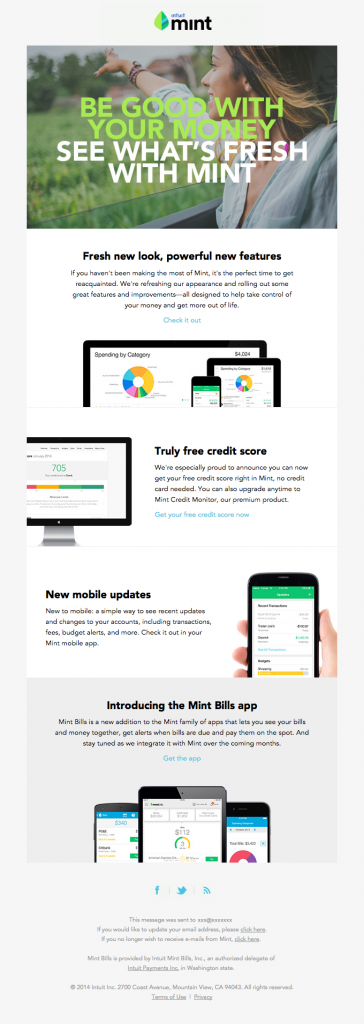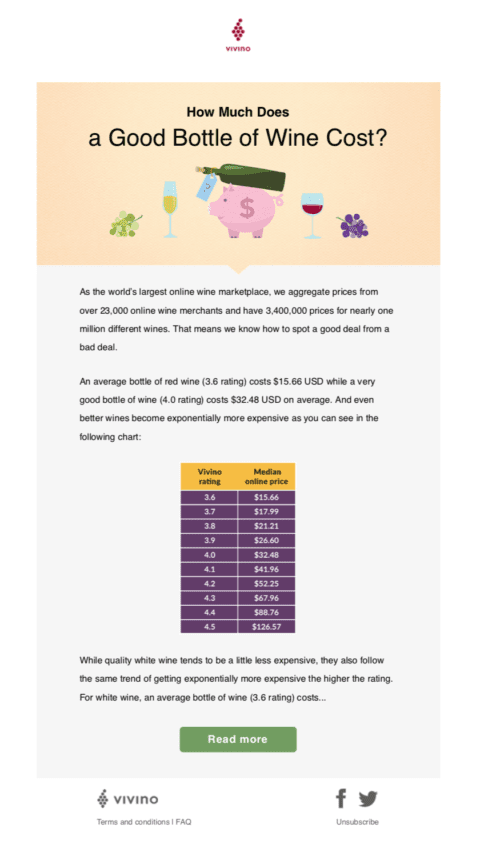Nurture emails are excellent tools that you can use to move prospective customers down the sales funnel until they make a purchase. Nurture emails, drip campaigns, and welcome emails are all really similar. In fact, your welcome email may even be part of your overall lead nurturing strategy!
Below, we’re going to cover everything you need to know about email lead nurturing so that you can create an effective lead nurture email program that educates and encourages your contacts so they sign up for your service, make their first purchase, or perform any other action that you’re guiding them toward.
While all of these types of emails are really similar, they all have specific functions and can be used in different ways:
Drip email campaigns: Drip emails are automated marketing campaigns that can be used for any number of different purposes. You could create a drip campaign targeted at older contacts that encourage them to come back and make a new purchase, or you could send a seasonal drip campaign that drives website engagement.
Welcome emails: While a welcome email series could also be called a drip email campaign, these emails are designed specifically for new customers so that they can become more familiar with your company or service. We have a great blog post called
Effective Welcome Email Campaign Examples if you’d like to learn more.
Nurture email campaigns: As their name implies, nurture emails are meant to educate and nurture prospects or leads. More educational than most drip campaigns, nurture emails are still a form of email marketing, but often convey the value of a company or teach recipients about subjects that they’ve signaled an interest in. Nurture emails are great tools for shepherding leads through the sales process until they’re ready and comfortable making an initial purchase.
Below, we've provided some lead nurture email examples to give you an idea of email nurturing best practices.
Unlike your high school reunion, showing off what differentiates you from competitors and alternatives is a great nurture tactic. Many leads and prospects visit multiple websites looking for the perfect solution for their needs. By providing them with a concise, interesting message about the benefits your product or service provides, they may decide to return and complete their sign up or purchase.
Below,
Mint has done a great job of showcasing their updated app. Not only do they have information about how users will get mobile updates and have an easier to use app, they educate customers about getting their credit score for free.
 Havenly
Havenly does a great job with this email I received recently. You’ve probably seen
Havenly’s email examples used in other blog posts because they create really great messages. In this nurture email example, Havenly is giving their recipients some great inspiration for making their homes ready for the holiday. Rather than push recipients to sign up for their service, they’re providing a tutorial and giving them a link to the Havenly blog.

Hitting your recipients inbox at the right time also applies to nurture emails. Now, the example below from
Thumbtack is from this summer, and it does lean more toward a general email marketing campaign, but it resonated as a nurture email for me. They sent this message on July 3rd (the day before a big party day here in the United States), and it absolutely reminded me that I wanted to book cleaning service. At the same time, it reminded me of some other things I wanted to do (although, not all through Thumbtack).
 Vivino
Vivino is a great app that you can use to track, rate, and purchase wine. We’ve even featured
the story of their success in our case studies. In this excellent lead nurturing email example below, they’re extremely transparent with their own data to show recipients how much the average bottle of wine costs.
This is a great email because a lot of times, companies will keep this sort of data to themselves. Vivino, on the other hand, is showing their new leads that they don’t need to spend a fortune on a perfectly good bottle of wine. The information makes you want to explore some more bottles that are within your price range.

Like I mentioned in the beginning, lead nurturing emails differ from drip email marketing campaigns because they should assist and educate the recipient. Whether you’re showing them what other customers have purchased in the past or how best to leverage your software, making sure your recipients find value from your email can often be more impactful than announcing yet another sale.
Rather than offer a discount, consider educating your recipients so that when they are ready to make a purchase in the future, they think of your valuable messages, and go to your website first. Some good nurture email marketing strategies can include:
- Screenshots and directions on how to use your software or app so that they can get what they need quickly and easily.
- Information on the industry. Especially when it comes to b2b messages, rather than simply highlighting your products, include industry stats that the recipient might be interested in.
- Link your nurture email program to your social media efforts. By making sure your nurture emails reflect the tone and personality of your social media posts, you can ensure a more cohesive experience for prospects that are following you online and receiving your emails.
- Make your nurture emails as valuable as possible to the individual. Whether that means showcasing more information about products they’ve expressed interest in, or demonstrating the benefits of your service or product, teach recipients about their future purchase.
For more information on how to optimize your email nurture campaigns, check out
Email Drip Campaign Best Practices and Tips.
Move prospective customers down the sales funnel using an effective email lead nurturing campaign with Twilio SendGrid.
Connect with our experts to get the tools to unlock unharnessed potential so that your
email designs bring you one step closer to achieving your sales goals.





